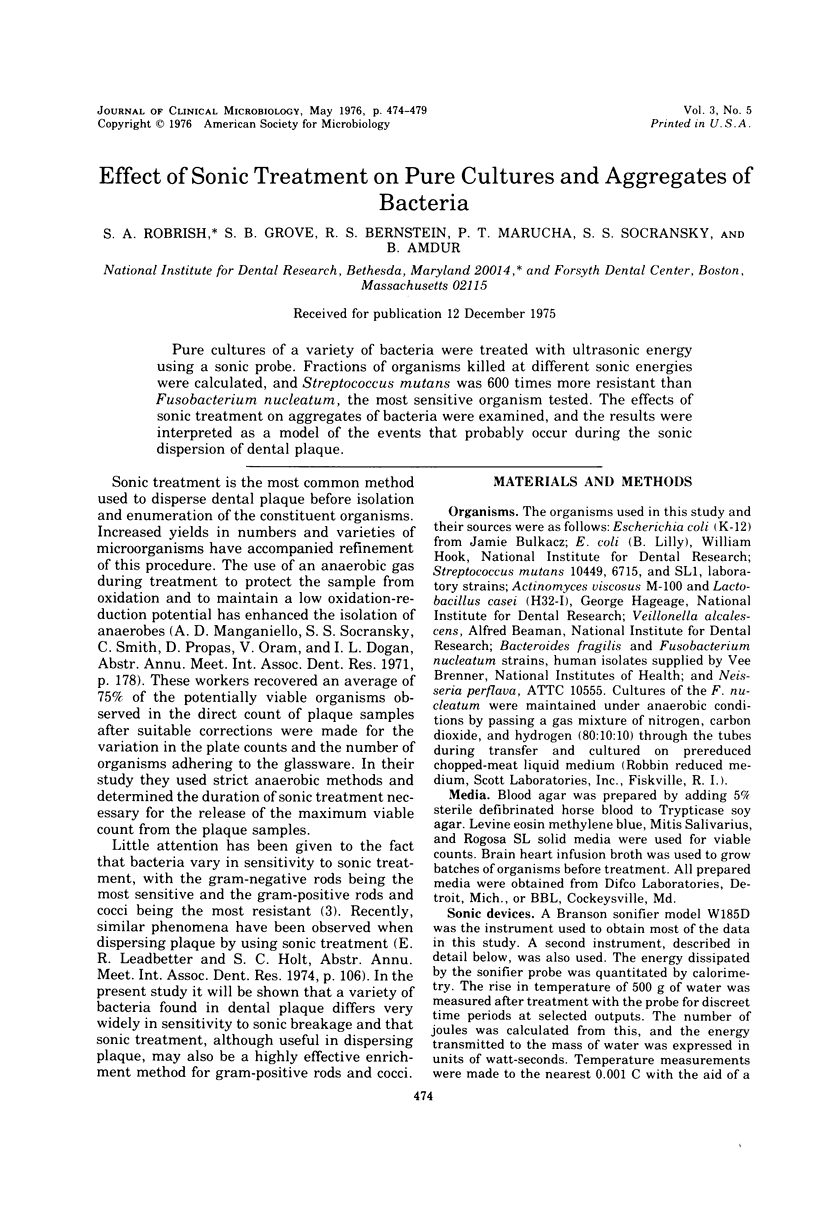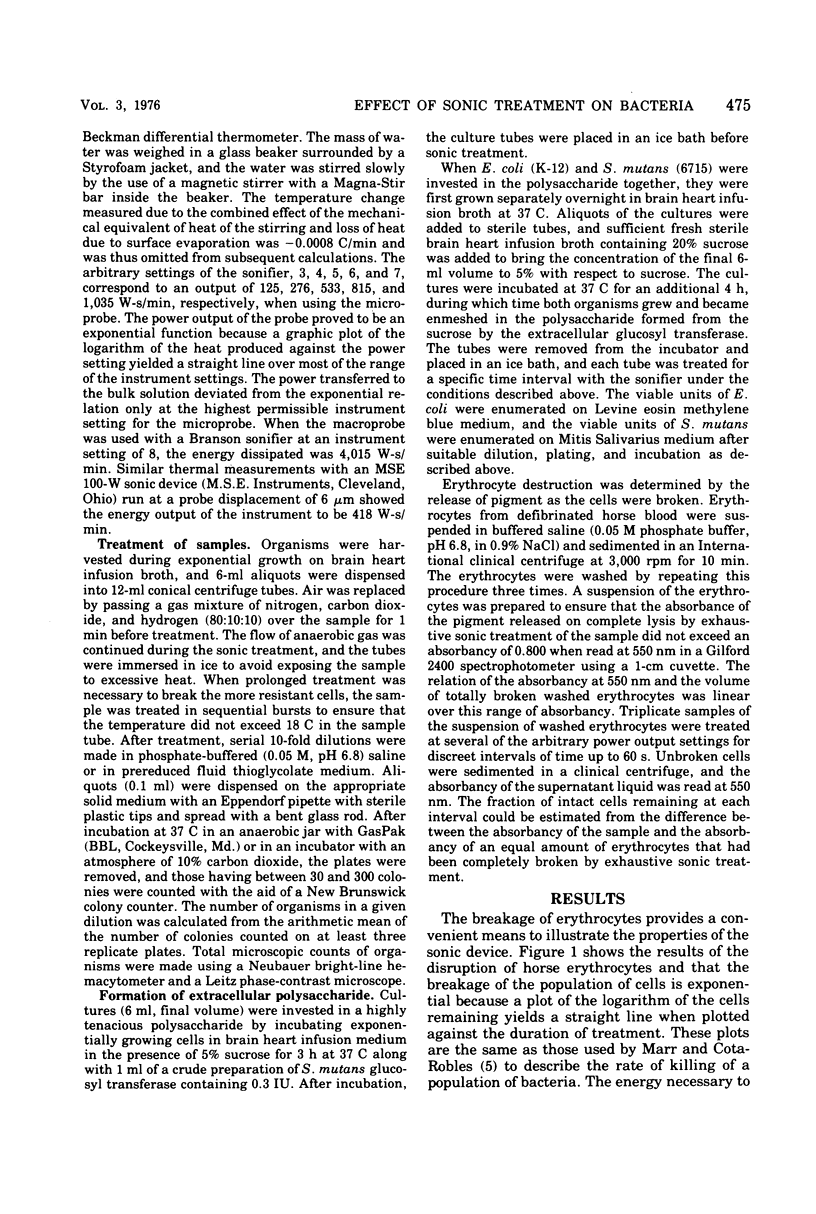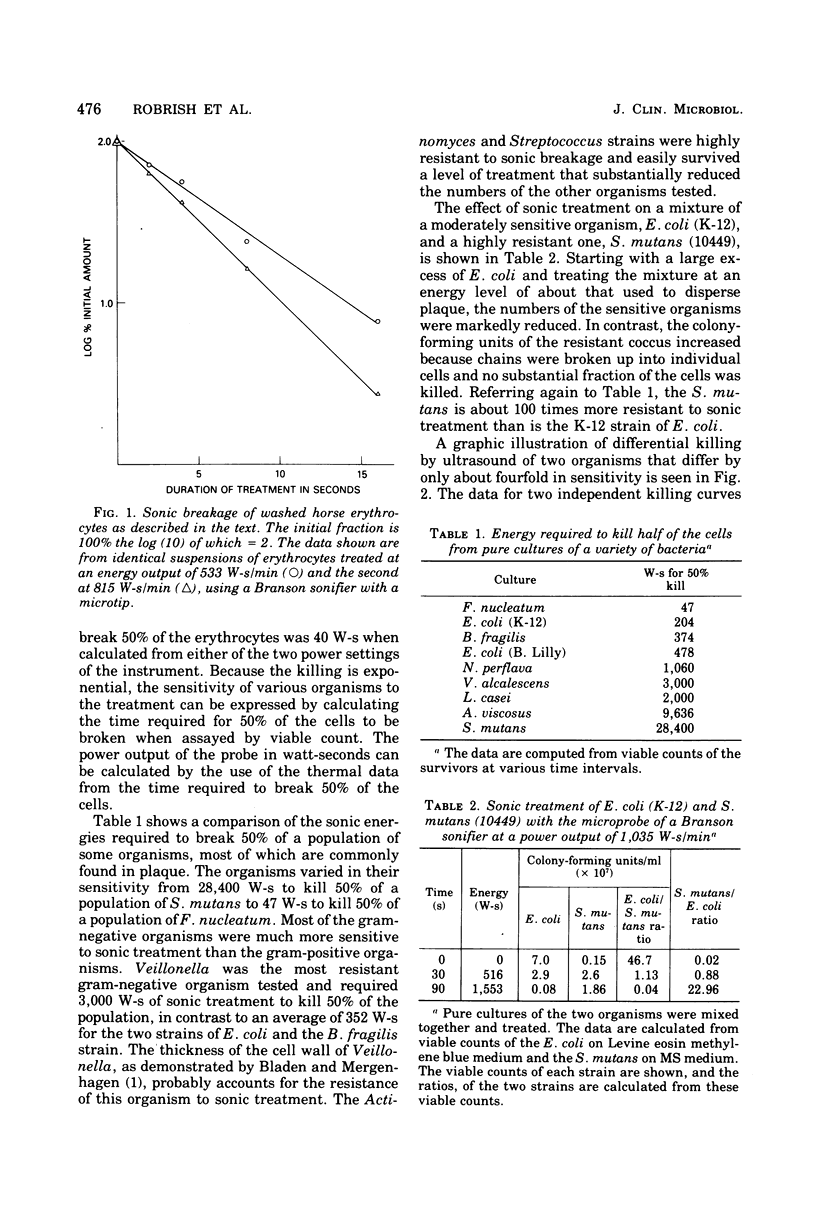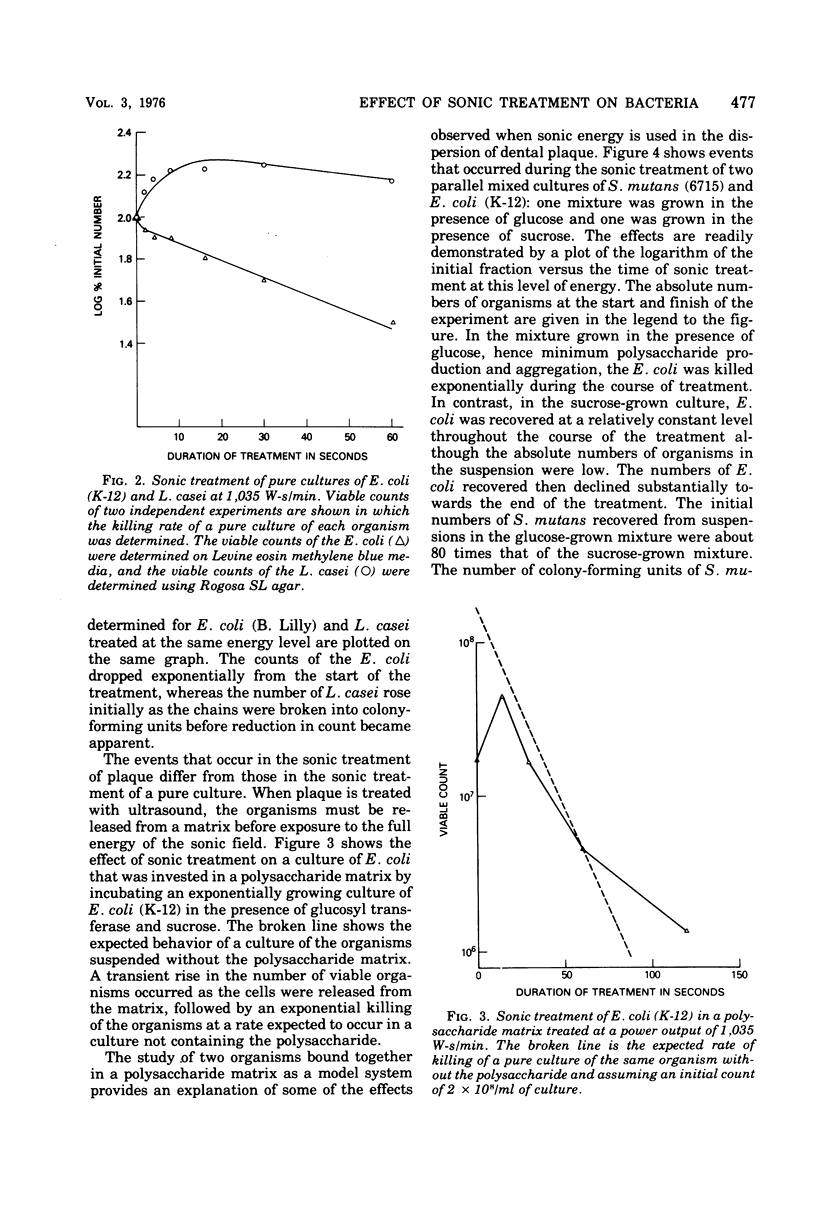Abstract
Pure cultures of a variety of bacteria were treated with ultrasonic energy using a sonic probe. Fractions of organisms killed at different sonic energies were calculated, and Streptococcus mutans was 600 times more resistant than Fusobacterium nucleatum, the most sensitive organism tested. The effects of sonic treatment on aggregates of bacteria were examined, and the results were interpreted as a model of the events that probably occur during the sonic dispersion of dental plaque.
Full text
PDF





Selected References
These references are in PubMed. This may not be the complete list of references from this article.
- BLADEN H. A., MERGENHAGEN S. E. ULTRASTRUCTURE OF VEILLONELLA AND MORPHOLOGICAL CORRELATION OF AN OUTER MEMBRANE WITH PARTICLES ASSOCIATED WITH ENDOTOXIC ACTIVITY. J Bacteriol. 1964 Nov;88:1482–1492. doi: 10.1128/jb.88.5.1482-1492.1964. [DOI] [PMC free article] [PubMed] [Google Scholar]
- DAVIES R. Observations on the use of ultrasound waves for the disruption of micro-organisms. Biochim Biophys Acta. 1959 Jun;33(2):481–493. doi: 10.1016/0006-3002(59)90138-6. [DOI] [PubMed] [Google Scholar]
- MARR A. G., COTA-ROBLES E. H. Sonic disruption of Azotobacter vinelandil. J Bacteriol. 1957 Jul;74(1):79–86. doi: 10.1128/jb.74.1.79-86.1957. [DOI] [PMC free article] [PubMed] [Google Scholar]
- Socransky S. S., Manganiello S. D. The oral microbiota of man from birth to senility. J Periodontol. 1971 Aug;42(8):485–496. doi: 10.1902/jop.1971.42.8.485. [DOI] [PubMed] [Google Scholar]
- Socransky S. S. Relationship of bacteria to the etiology of periodontal disease. J Dent Res. 1970 Mar-Apr;49(2):203–222. doi: 10.1177/00220345700490020401. [DOI] [PubMed] [Google Scholar]
- WILLIAMS N. B., EICKENBERG C. F. Effects of sonic vibration on the numbers of microorganisms cultivable from human saliva. J Dent Res. 1952 Jun;31(3):428–439. doi: 10.1177/00220345520310032201. [DOI] [PubMed] [Google Scholar]


